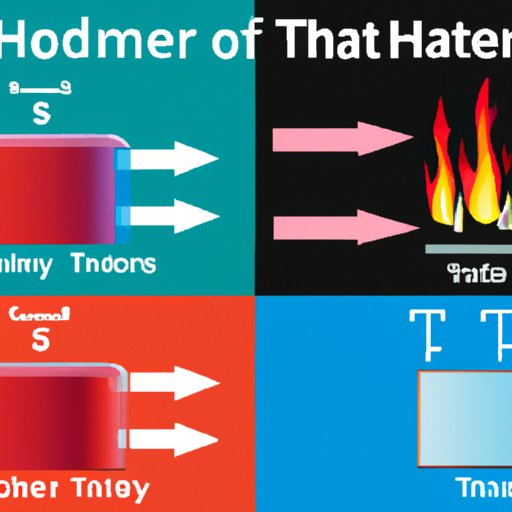Introduction: Exploring the Science of Heat Transfer: Does Hot Move to Cold?
Heat transfer is a fascinating and complex topic in the world of physics. The idea that heat can move from an area of higher temperature to an area of lower temperature has been studied for centuries, and it is important to understand how this process works. In this article, we will explore the science of heat transfer and examine the physics behind how heat moves from hot to cold.
How Heat Travels from Hot to Cold: A Comprehensive Guide
In order to understand the concept of heat transfer from hot to cold, it is necessary to examine the laws of thermodynamics. According to these laws, energy cannot be created or destroyed, only transferred from one form to another. This means that when heat is transferred from a hotter object to a cooler object, the total amount of energy remains the same. However, the energy has shifted from the warmer object to the colder object, thus resulting in a decrease in temperature of the hotter object and an increase in temperature of the cooler object.
Once we understand the basics of heat transfer, we can begin to investigate the process of heat transfer from hot to cold. Heat is transferred in three main ways: conduction, convection, and radiation. Conduction occurs when two objects come into contact with each other and heat is transferred through direct contact. Convection happens when hot air rises and cool air falls, resulting in heat being transferred from the hotter air to the cooler air. Finally, radiation is the process of heat being transferred from one object to another without any physical contact between them.

An Exploration of Heat Transfer: From Hot to Cold
Now that we have a basic understanding of the three main ways in which heat is transferred, let’s take a closer look at the physics behind heat transfer from hot to cold. Heat always flows from an area of higher temperature to an area of lower temperature. This is because heat is a form of energy, and energy will always flow from an area of high concentration to an area of low concentration. Therefore, when two objects are at different temperatures, heat will naturally flow from the hotter object to the cooler object.
There are several factors that affect the speed at which heat is transferred from hot to cold. These include the materials that the objects are made of, the size and shape of the objects, and the distance between them. For example, if two objects are made of different materials, heat will be transferred faster through one material than the other. Similarly, if two objects are different sizes, heat will be transferred faster through the larger object.
Different types of heat transfer also occur at different speeds. For example, radiation is the fastest type of heat transfer, followed by convection and then conduction. Additionally, air is a better conductor of heat than solid materials, so heat will travel faster through air than through solids.

Conclusion: Summarizing the Science of Heat Transfer
We have now explored the science of heat transfer from hot to cold and investigated the physics behind this process. We have seen that heat always travels from an area of higher temperature to an area of lower temperature, and that the speed of this transfer is affected by various factors, including the materials of the objects, their size and shape, and the type of heat transfer. We have also learned that radiation is the fastest type of heat transfer, while conduction is the slowest.
What can we learn from this exploration? Most importantly, we can understand that heat transfer is a natural process that occurs all around us. This knowledge can help us to better understand our environment and the ways in which heat behaves.

Resources: Further Reading on Heat Transfer
For further reading on heat transfer, please see the following resources:
- Engineering Toolbox: Heat Transfer Basics
- Khan Academy: Types of Heat Transfer
- Texas Energy Education: Heat Transfer Basics
Sources for Additional Information
For additional information on heat transfer, please refer to the following sources:
- ScienceDirect: Heat Transfer
- National Center for Biotechnology Information: Heat Transfer Fundamentals
-
(Note: Is this article not meeting your expectations? Do you have knowledge or insights to share? Unlock new opportunities and expand your reach by joining our authors team. Click Registration to join us and share your expertise with our readers.)
